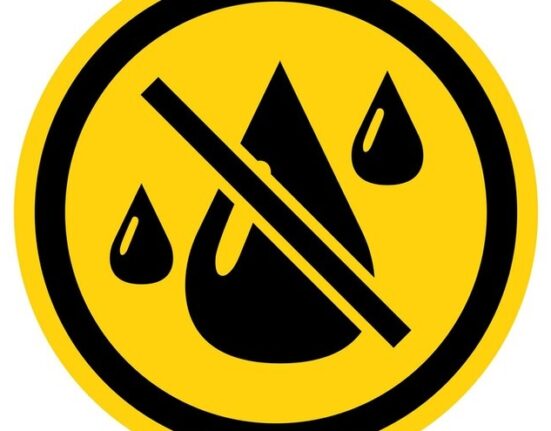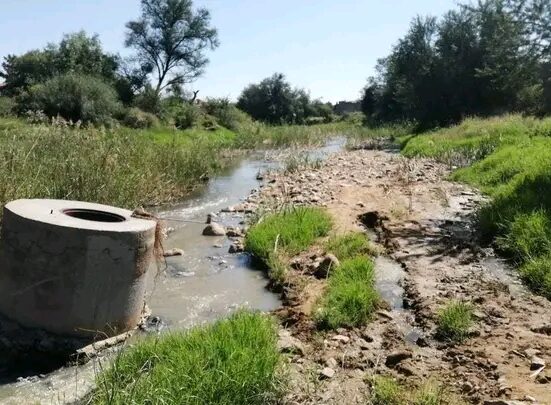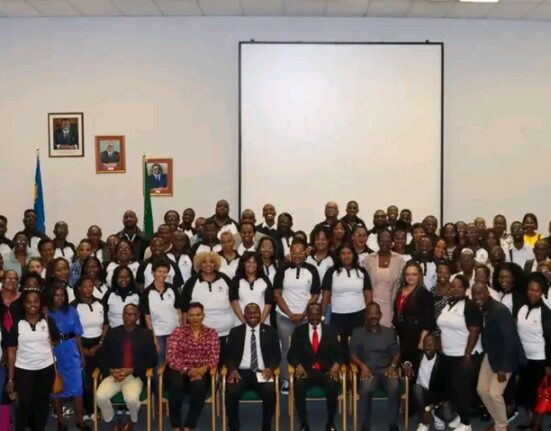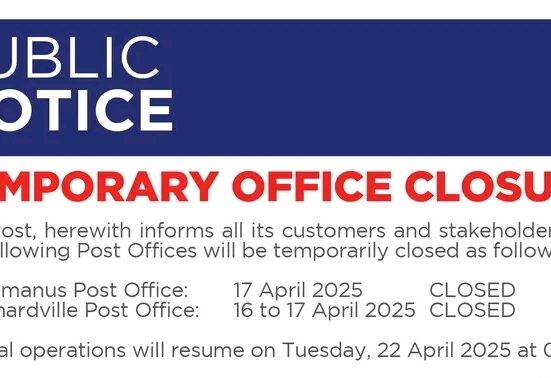Namibia’s marine ecosystem is a unique and vital component of the country’s natural heritage, offering a rich diversity of marine life and supporting critical environmental processes. With its long coastline stretching over 1,500 kilometers along the South Atlantic Ocean, Namibia is home to the Benguela Current, one of the world’s most productive marine ecosystems. This nutrient-rich current supports an abundance of marine species, including fish, seals, seabirds, and other marine organisms, making Namibia’s coastal waters a biodiversity hotspot.
However, the health of Namibia’s marine ecosystem faces numerous threats, including overfishing, habitat destruction, and climate change. In recent years, the Namibian government, conservation organizations, and local communities have taken significant steps to protect and preserve these Atlantic treasures. This article explores Namibia’s unique marine biodiversity, the challenges it faces, and the strategies being implemented to ensure its long-term sustainability.
1. The Rich Marine Biodiversity of Namibia
Namibia’s marine environment is defined by the Benguela Current, which flows northward along the west coast of southern Africa. This current brings cold, nutrient-rich water from the ocean’s depths to the surface, creating ideal conditions for marine life. The result is a vibrant ecosystem that supports a variety of species, some of which are endemic to the region.
a. Fish and Commercial Fisheries
Namibia’s waters are home to a wide range of fish species, many of which are commercially important. These include:
- Hake (Merluccius spp.): One of the most valuable fish species in Namibia’s fisheries, hake is a staple of the country’s seafood industry and is exported worldwide.
- Sardines and Anchovies: These small pelagic fish play a crucial role in the marine food chain, serving as prey for larger predators such as seals, seabirds, and dolphins.
- Horse Mackerel: Another key species in Namibia’s fishing industry, horse mackerel is widely consumed domestically and exported to neighboring countries.
b. Marine Mammals
Namibia’s coastline is a haven for marine mammals, including:
- Cape Fur Seals: Namibia is home to one of the largest Cape fur seal populations in the world. These seals are commonly seen along the coast, particularly at seal colonies like Cape Cross.
- Dolphins: Several dolphin species, including the bottlenose dolphin and Heaviside’s dolphin (endemic to the region), are found in Namibian waters.
- Whales: Namibia’s waters host a variety of whale species, including humpback whales, southern right whales, and orcas. These magnificent creatures are often spotted during their migration seasons.
c. Seabirds
Namibia’s coastal and marine areas support a diverse array of seabirds, including:
- African Penguins: These endangered birds are found on offshore islands and coastal areas, where they rely on small fish like sardines for food.
- Cape Gannets: Known for their dramatic diving behavior, Cape gannets are commonly seen off Namibia’s coast.
- Cormorants and Terns: These birds thrive in Namibia’s nutrient-rich waters and are an integral part of the ecosystem.
d. Unique Marine Habitats
Namibia’s marine environment includes several unique habitats, such as:
- Sandbanks and Mudflats: These areas are critical for benthic organisms, which form the base of the marine food web.
- Rocky Shores and Reefs: These habitats provide shelter and feeding grounds for various marine species, including invertebrates and fish.
- Offshore Islands: These islands serve as important breeding and resting sites for seabirds and seals.
2. Challenges Facing Namibia’s Marine Ecosystem
Despite its rich biodiversity, Namibia’s marine environment is under threat from a range of human and environmental factors. Addressing these challenges is critical to ensuring the sustainability of the country’s marine resources.
a. Overfishing
Overfishing is one of the most significant threats to Namibia’s marine ecosystem. The high demand for fish, both domestically and internationally, has led to unsustainable fishing practices that deplete fish stocks and disrupt the food chain. Key species like sardines and hake have experienced population declines due to overexploitation.
b. Habitat Destruction
Activities such as bottom trawling, coastal development, and mining can damage critical marine habitats. For example:
- Bottom trawling disturbs the seafloor, destroying benthic habitats and impacting species that rely on them.
- Coastal development and infrastructure projects can lead to habitat loss and pollution.
c. Climate Change
Climate change poses a growing threat to Namibia’s marine environment. Rising sea temperatures, ocean acidification, and changes in ocean currents can affect marine species’ distribution, breeding patterns, and food availability. The Benguela Current ecosystem, in particular, is sensitive to climate fluctuations.
d. Pollution
Marine pollution, including plastic waste, oil spills, and chemical runoff, is a significant concern. Pollution can harm marine life, contaminate habitats, and pose risks to human health.
e. Illegal, Unreported, and Unregulated (IUU) Fishing
IUU fishing undermines sustainable fisheries management and threatens marine biodiversity. Namibia’s vast coastline makes it challenging to monitor and enforce regulations against illegal fishing activities.
3. Namibia’s Efforts to Protect Marine Life
Namibia has made significant strides in marine conservation through a combination of policy measures, community involvement, and international partnerships. Some of the key initiatives include:
a. Marine Protected Areas (MPAs)
Namibia has established several MPAs along its coastline to safeguard critical habitats and biodiversity. These protected areas restrict certain activities, such as fishing and mining, to minimize environmental impact. Notable MPAs include:
- Namibian Islands Marine Protected Area: This is one of the largest MPAs in Africa, covering offshore islands and surrounding waters to protect seabirds, seals, and fish.
b. Sustainable Fisheries Management
Namibia is a global leader in sustainable fisheries management. The government has implemented strict regulations to control fishing quotas, prevent overfishing, and reduce bycatch. Key measures include:
- Total Allowable Catch (TAC) limits for commercially important fish species.
- The use of satellite monitoring systems to track fishing vessels and ensure compliance.
c. Anti-Poaching and Enforcement
Namibia has strengthened its enforcement efforts to combat illegal fishing and poaching. Patrol vessels, surveillance technology, and collaboration with neighboring countries help monitor and protect the country’s waters.
d. Community-Based Conservation
Namibia’s Community-Based Natural Resource Management (CBNRM) program has been extended to marine areas, empowering coastal communities to participate in conservation efforts. By involving local people in decision-making and sharing the benefits of sustainable tourism and fishing, the program fosters a sense of ownership and responsibility for marine resources.
e. Research and Monitoring
Scientific research and monitoring play a crucial role in understanding Namibia’s marine ecosystem and guiding conservation efforts. Organizations such as the Namibian Ministry of Fisheries and Marine Resources and Namibia Nature Foundation conduct studies on fish stocks, marine mammals, and environmental changes.
4. The Role of Ecotourism in Marine Conservation
Ecotourism has emerged as a valuable tool for promoting marine conservation in Namibia. Activities such as whale watching, seal colony tours, and kayaking along the coast generate income for local communities while raising awareness about the importance of protecting marine life.
a. Seal and Dolphin Tours
Tour operators in areas like Walvis Bay and Lüderitz offer boat tours to observe seals, dolphins, and seabirds in their natural habitats. These tours emphasize sustainable practices, such as limiting disturbances to wildlife.
b. Marine Education Programs
Many ecotourism operators incorporate educational components into their tours, teaching visitors about Namibia’s marine ecosystem and conservation challenges. This helps foster a deeper appreciation for the country’s natural heritage.
c. Support for Conservation Projects
Revenue from ecotourism often supports marine conservation projects, such as wildlife monitoring and habitat restoration.
5. The Future of Namibia’s Marine Conservation
Namibia’s commitment to protecting its marine environment is an inspiring example of how a nation can balance economic development with environmental sustainability. However, continued efforts are needed to address emerging threats and ensure the long-term health of the country’s marine ecosystem.
a. Expanding Marine Protected Areas
Expanding the coverage of MPAs and improving their management will be crucial for protecting biodiversity and building resilience against climate change.
b. Strengthening Enforcement
Investing in technology and international collaboration will enhance Namibia’s ability to combat IUU fishing and other illegal activities.
c. Climate Change Adaptation
Developing strategies to mitigate the impacts of climate change on marine ecosystems will be essential for preserving biodiversity and supporting fisheries.
Namibia’s marine life is a hidden treasure that plays a vital role in the country’s ecological, economic, and cultural identity. By adopting innovative conservation strategies, promoting sustainable fisheries, and engaging local communities, Namibia is setting an example for marine conservation in Africa and beyond. Protecting these Atlantic treasures is not only crucial for Namibia’s future but also for the global effort to preserve our planet’s oceans and marine biodiversity.













